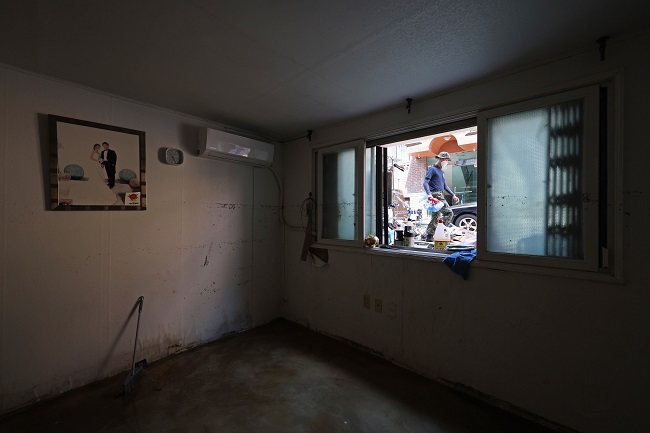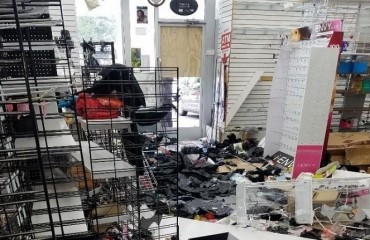
This file photo taken on Aug. 12, 2022, shows a “banjiha” house in southern Seoul after torrential downpours hit the capital city of Seoul last week. (Yonhap)
SEOUL, Feb. 21 (Korea Bizwire) — People in the lower social tier are exposed to a risk of a significant impact from natural or social disasters and struggle more to overcome them, according to a research report issued by the state-run think tank.
The Korea Institute for Health and Social Affairs conducted a survey of 1,837 people between 19 and 74 years of age, among whom 620 people said they fell victim to natural disasters. Another 939 people said they were hurt by social disasters.
Among those who said they had been hurt by natural disasters, 71.3 percent had graduated from middle school or below as their highest educational attainment, surpassing college graduates (47.2 percent).
Another 58 percent of people who were hurt by natural disasters identified themselves to be in the lower social tier, surpassing those in the “mid-high or high social tier” (32.3 percent).
At 59.8 percent, a similar proportion of people who were hurt by natural disasters thought they lacked social support, surpassing those who believed they had social support (44 percent).
The pattern was similar in the case of social disasters. At 65.7 percent, almost two thirds of people who were hurt by social disasters came from the lower social tier, surpassing the “mid-high or high social tier” (52.5 percent).
People who lacked social support (63.2 percent) were more likely to be hurt by social disasters than those who had social support (51.2 percent).
Among those who experienced natural disasters, 10.7 percent said they were still recovering from them.
Among them, a majority were middle school graduates or lower (21.8 percent), in the lower social tier (21.4 percent), worked irregularly (13.9 percent), lacked social support (14.7 percent) and had mistrust towards society (13.8 percent).
Among all social disaster victims, 24.1 percent were still undergoing recovery. Among them, a majority were middle school graduates or lower (38.2 percent), in the lower social tier (38.8 percent) and worked irregularly (28.4 percent).
In both natural or social disasters, the people from the lower social tier (83.2 percent, 51.3 percent) believed government support was insufficient.
Those who lacked social support (82.9 percent, 54.8 percent) and those who said they do not trust society (77.1 percent, 47.7 percent) also believed the same.
H. M. Kang (hmkang@koreabizwire.com)






